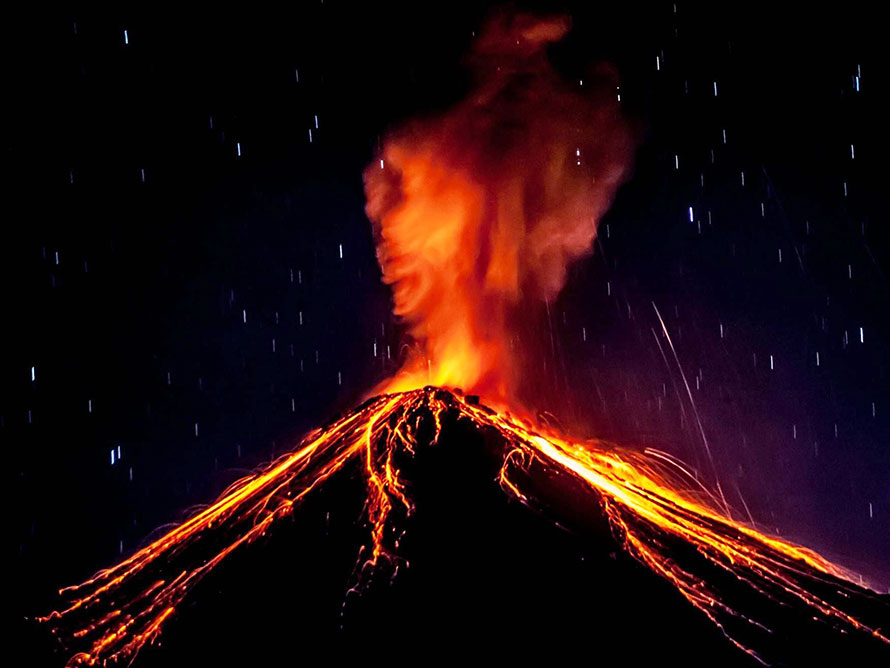|
Guatemala’s volcanology unit said that explosions from the 12,300ft (3,763-meter) mountain shook homes with “constant sounds similar to a train locomotive”.
Incandescent material burst as high as 3,200ft above the crater and flows of hot rock and ash extended about 1.5 miles down one flank of the volcano. Hot blasts of pyroclastic material pushed down canyons on the slopes, while ash drifted toward Guatemala City to the east.
Hundreds of families heeded the call of disaster coordination authorities to evacuate 10 communities, piling into yellow school buses for trips to shelters. The national disaster commission said 3,925 people had been evacuated by early Monday.
|

Hellish: Lava flows spewing from its summit reached temperatures of around 700 degrees C.
| The Volcano of Fire is one of the most active in Central America and an eruption in June killed 194 people. Another 234 are officially missing, although organizations supporting the communities have insisted there are thousands of missing persons.
It spewed more ash and hot rock in October, prompting warnings for the nearby communities.
The biggest danger from the volcano are lahars, a mixture of ash, rock, mud and debris, that can bury entire towns.
However, by Monday, there had been no reports of such flows reaching populated areas, though authorities were taking no chances; they were harshly criticized for not calling for evacuations earlier in June.
|